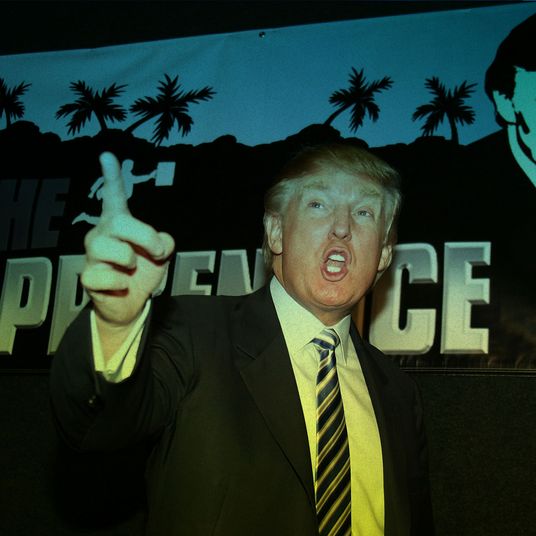
The standard social-media bargain was never ideal, but it was simple enough. Users got to post, consume, and share with other users on a given service for free. In exchange, they could expect to be subjected to constant advertising, intimate surveillance, inclusion into theoretical future AI-training sets, and a steady barrage of new features intended to harvest as much of their allotment of earthly consciousness as possible.
But now, one by one, the platforms are showing interest in a different sort of bargain. This week, according to The Wall Street Journal, Meta shared with EU regulators a proposal for a subscription model:
Meta has told regulators it hopes to roll out the plan — which it calls SNA, or subscription no ads — in coming months for European users. It would give users the choice between continuing to access Instagram and Facebook free with personalized ads, or paying for versions of the services without any ads, people familiar with the proposal said … Meta has told regulators it would charge users roughly €10 a month, equivalent to about $10.50, on desktop on a Facebook or Instagram account, and roughly €6 for each additional linked account, the people said.
Around the same time, TikTok confirmed that it was testing its own ad-free paid product in a “single, English-speaking market outside the U.S.” A few weeks before, Elon Musk had suggested in a livestreamed interview that X, which currently offers an $8 subscription tier, might move all users to “a small monthly payment” plan.
Each company has its own motivations for doing this. Meta is sparring with European regulators whose actions the company clearly sees as a threat to its business, so its proposals should be taken with a grain of salt; TikTok, which would also be subject to any such regulations, seems to be treating the feature as a small test; X needs to replace the billions of dollars that Musk scared out of its advertising business. But the companies do have some common concerns. Digital advertising is a mature market in the middle of a slump with new competitors piling in from across the economy. User growth is slowing and in some cases reversing. Lots of tech businesses are looking for new revenue streams, and social platforms are no different.
Meta, TikTok, and X have peers they can learn from. YouTube launched YouTube Red, which became YouTube Premium, all the way back in 2014; it gets rid of ads and includes a few extra features like video downloads. Twitter Blue, the precursor to X Premium, launched in 2021. Neither service offered nor cost very much and didn’t get traction. Snapchat +, which adds a bunch of small features and launched last year, is fairly cheap but seems targeted at a narrow slice of the service’s most obsessive users.
More enticing examples can be found in the world of dating platforms and professional networks. Tinder, Bumble, and Hinge frequently rank among the highest-grossing iPhone apps (Tinder’s top subscription tier runs $30, which is more than any mainstream streaming service). LinkedIn’s paid tiers targeted at recruiters cost thousands of dollars a year, while its general-audience paid service — which you basically need to make the site fully functional as a job-seeker or employer — runs $40 a month.
Putting a price on your social network is interesting and sort of risky — it’s a fast and brutal way to find what people really think your service is for and what that purpose is worth. People pay for dating apps in hopes of finding a partner or just getting laid. LinkedIn has a classic spend-money-to-make-money pitch and benefits from a clear sense of competition between users for something beyond pure attention. It doesn’t exactly feel good to have to pay a middleman a fee to be considered by employers who might offer you a job, but you know why you’re doing it.
There are lessons here for general-purpose social networks — Musk seems open to making the free version of his platform worse as a way to make the paid product seem appealing or necessary in comparison, which feels a little bit like blackmailing longtime users but is also not that different from what worked for LinkedIn over the last 15 years — but there are warnings too. People know exactly why they’re using LinkedIn or Bumble. Users’ relationships with Instagram and TikTok are often a lot fuzzier. You’re there because your friends are there, or because other people are posting things you want to read or watch. Making money part of the equation might feel like scummy toll-taking and prompt users to put a price on a product that inhabits the strange space between a thing they use and an unintentional habit — a thing that, in effect, uses them. Charging to get rid of ads around content users are accustomed to consuming for free, with ads, is hard for similar reasons: Paying to subscribe to a network full of user-generated content feels like a worse deal than shelling out for Netflix, which is at least selling you something it spent money on in the first place. (Although these comparisons could become more favorable as streamers drift in the other direction, away from pure subscriptions and into digital advertising.)
Lacking a specific off-platform thing they can sell at a premium — Hot singles IN YOUR AREA! A dream job JUST ONE PREMIUM MESSAGE AWAY — general- interest social networks have the riskier option of charging their users for access to other users’ attention, which is their core product. You can see this strategy in Musk’s X Premium, which promises more reach to paid users and less to everyone else, essentially asking users to pay to remain visible on the platform for whatever purposes they might have, including getting access to its nascent revenue-sharing program. This is a solid plan for extracting subscription payments from users from whom attention on X has unusually high monetary or social value, assuming meaningful numbers of such people exist — I’m not sure I would, but I suppose we’ll find out soon enough.
In a way, this should all sound familiar. Paying a fee so that other people are more likely to see your content? Spending money on media to build or maintain a brand? That was part of the original social-media bargain too — for advertisers. In this case, the shift toward subscription is less about finding an alternative to the advertising model than it is about reaching for its absurd, ultimate conclusion, in which everyone becomes a brand and the audience ceases to matter.
More From This Series
- Uncanny AI Videos Are About to Flood the Internet
- The Other Big Problem With AI Search
- How Siri Made Apple Cautious About AI






























